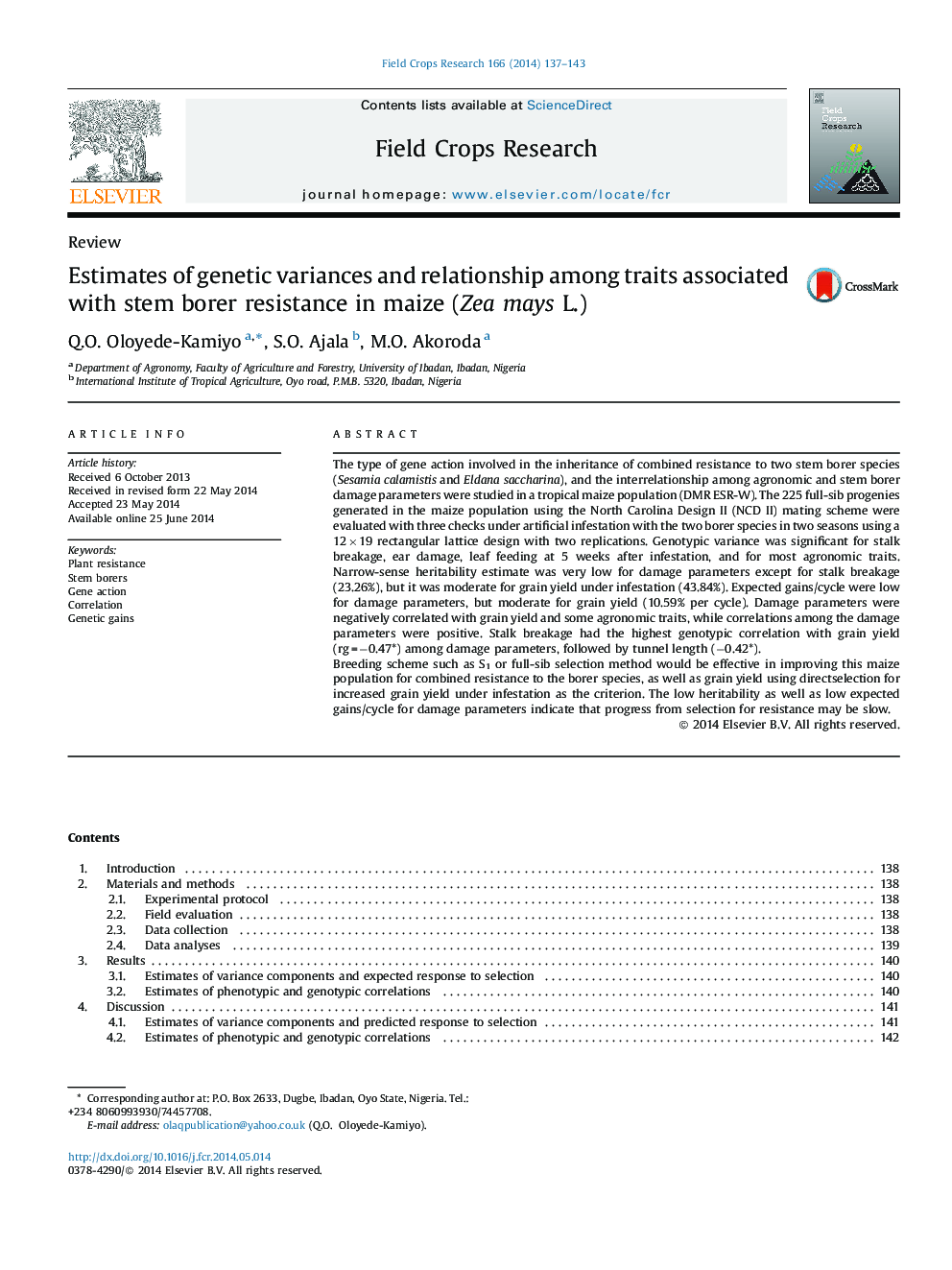| Article ID | Journal | Published Year | Pages | File Type |
|---|---|---|---|---|
| 4509999 | Field Crops Research | 2014 | 7 Pages |
•Additive gene action controlling stalk breakage and grain yield, with moderate narrow sense heritability estimates suggests possible improvement for the maize population.•S1 or full-sib selection method could be used for improving the maize population for resistance to the stem borers.•Stalk breakage and tunneling having moderate negative correlations with grain yield among stem borer parameters should be considered during selection.•The low genetic gains and heritability estimates for the damage parameters indicate slow progress in improving these traits.
The type of gene action involved in the inheritance of combined resistance to two stem borer species (Sesamia calamistis and Eldana saccharina), and the interrelationship among agronomic and stem borer damage parameters were studied in a tropical maize population (DMR ESR-W). The 225 full-sib progenies generated in the maize population using the North Carolina Design II (NCD II) mating scheme were evaluated with three checks under artificial infestation with the two borer species in two seasons using a 12 × 19 rectangular lattice design with two replications. Genotypic variance was significant for stalk breakage, ear damage, leaf feeding at 5 weeks after infestation, and for most agronomic traits. Narrow-sense heritability estimate was very low for damage parameters except for stalk breakage (23.26%), but it was moderate for grain yield under infestation (43.84%). Expected gains/cycle were low for damage parameters, but moderate for grain yield (10.59% per cycle). Damage parameters were negatively correlated with grain yield and some agronomic traits, while correlations among the damage parameters were positive. Stalk breakage had the highest genotypic correlation with grain yield (rg = −0.47*) among damage parameters, followed by tunnel length (−0.42*).Breeding scheme such as S1 or full-sib selection method would be effective in improving this maize population for combined resistance to the borer species, as well as grain yield using directselection for increased grain yield under infestation as the criterion. The low heritability as well as low expected gains/cycle for damage parameters indicate that progress from selection for resistance may be slow.
